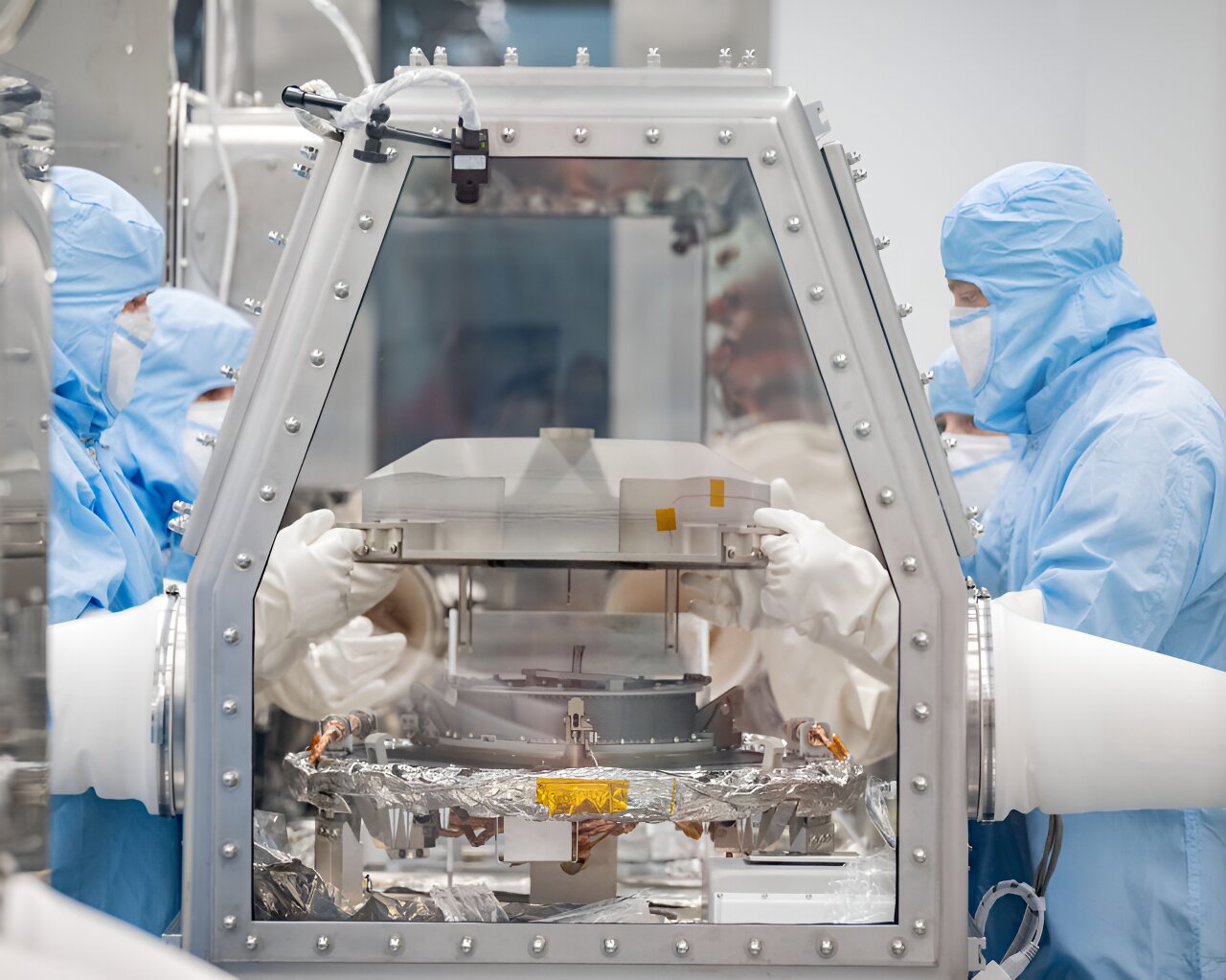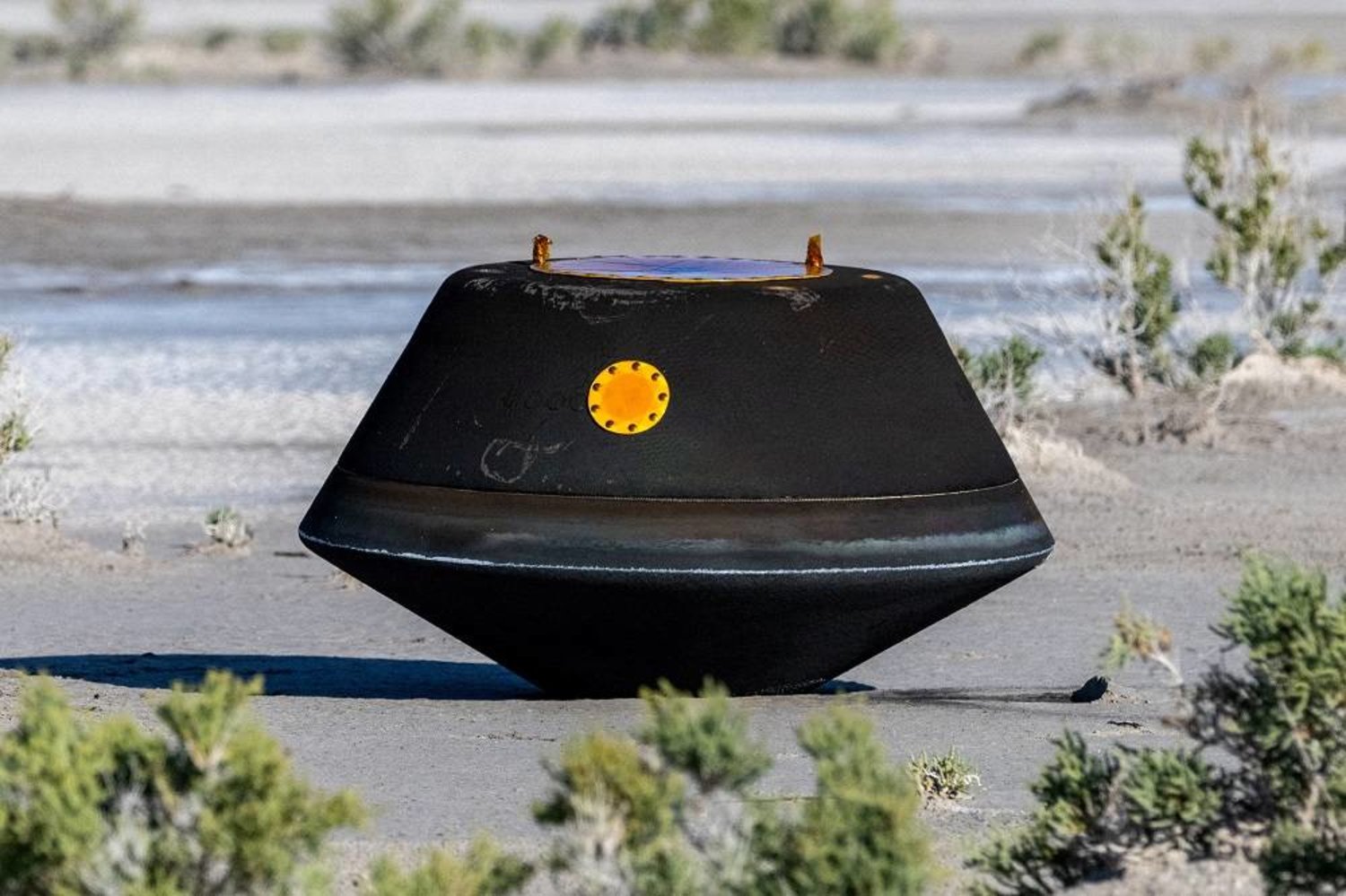Possible Asteroid Debris Discovered As NASA Opens Capsule
Possible asteroid debris discovered as NASA opens capsule that recently returned to Earth, containing the largest asteroid sample ever collected from space. On Tuesday, NASA reported that upon the initial removal of the lid from the Osiris-REx science canister, they found "dust and debris" on the avionics deck.
Author:Daniel JamesReviewer:Karan EmerySep 28, 202333.7K Shares822.4K Views

Possible asteroid debris discovered as NASA opens capsulethat recently returned to Earth, containing the largest asteroid sample ever collected from space. On Tuesday, NASA reported that upon the initial removal of the lid from the Osiris-REx science canister, they found "dust and debris" on the avionics deck.
The space agency did not explicitly confirm whether the materials found upon opening the probe's lid definitively originated from the asteroid. However, NASA shared on social media that "scientists gasped as the lid was lifted from the [Osiris-REx] asteroid sample return canister."
"A scientific treasure box," NASA Astromaterials said in a social media post.
“„Dark powder and sand-sized particles were found on the inside of the lid and base.- NASA
The debris discovered on the avionics deck on Tuesday was probably a consequence of challenges encountered during the collection phase of the space mission. NASA noted that these challenges were eventually resolved, enabling the safe transfer of the sample from the asteroid to the probe's storage canister.
The lid of the probe was unsealed within a hermetically sealed chamber located at the Johnson Space Center in Houston, Texas.
According to NASA's statement, the aluminum lid was taken off within a specially designed glovebox, created to facilitate handling of the substantial hardware. This process was illustrated through images shared on social media, depicting scientists in full protective gear as they worked with the probe positioned within a reinforced glass and steel enclosure.
NASA scientists are eagerly anticipating the commencement of their analysis of the majority of the sample gathered from the asteroid. This process will necessitate the intricate disassembly of the probe, as stated by the space agency.
A press conference has been scheduled for October 11, during which details regarding the bulk of the sample will be unveiled to the public.
The robotic spacecraft OSIRIS-REx was launched in 2016 and collected its specimen from Bennu, a small, carbon-rich asteroid discovered in 1999, three years ago. Bennu is categorized as a "near-Earth object" due to its relatively close proximity to our planet, with a close approach occurring every six years.
This retrieval marked only the third instance of an asteroid sample being brought back to Earth for analysis, and it is by far the largest, following two similar missions conducted by Japan's space agency in 2010 and 2020.
Upon landing on the asteroid, Osiris-Rex gathered approximately 250 grams (9 ounces) of dust from its rocky surface. Scientists believe that the analysis of this material will provide valuable insights into the formation of the solar system and the factors that led to Earth becoming habitable.
NASA has highlighted that the collected sample will also contribute to our improved understanding of the types of asteroids that may pose a threat to Earth. While the likelihood of Bennu colliding with Earth is considered low, it has not been completely ruled out.
Approximately one-quarter of the Bennu sample will be promptly utilized in experiments, with a small portion destined for mission collaborators in Japan and Canada. The remaining portion will be preserved for examination by future generations.
Conclusion
The space probe concluded its extensive 6.21-billion-kilometer (3.86-billion-mile) journey on Sunday, descending through Earth's atmosphere in a dramatic fashion before parachuting down in the Utah desert.
Jump to

Daniel James
Author
Daniel James is a distinguished gerontologist, author, and professional coach known for his expertise in health and aging.
With degrees from Georgia Tech and UCLA, including a diploma in gerontology from the University of Boston, Daniel brings over 15 years of experience to his work.
His credentials also include a Professional Coaching Certification, enhancing his credibility in personal development and well-being.
In his free time, Daniel is an avid runner and tennis player, passionate about fitness, wellness, and staying active.
His commitment to improving lives through health education and coaching reflects his passion and dedication in both professional and personal endeavors.

Karan Emery
Reviewer
Karan Emery, an accomplished researcher and leader in health sciences, biotechnology, and pharmaceuticals, brings over two decades of experience to the table. Holding a Ph.D. in Pharmaceutical Sciences from Stanford University, Karan's credentials underscore her authority in the field.
With a track record of groundbreaking research and numerous peer-reviewed publications in prestigious journals, Karan's expertise is widely recognized in the scientific community.
Her writing style is characterized by its clarity and meticulous attention to detail, making complex scientific concepts accessible to a broad audience. Apart from her professional endeavors, Karan enjoys cooking, learning about different cultures and languages, watching documentaries, and visiting historical landmarks.
Committed to advancing knowledge and improving health outcomes, Karan Emery continues to make significant contributions to the fields of health, biotechnology, and pharmaceuticals.
Latest Articles
Popular Articles
